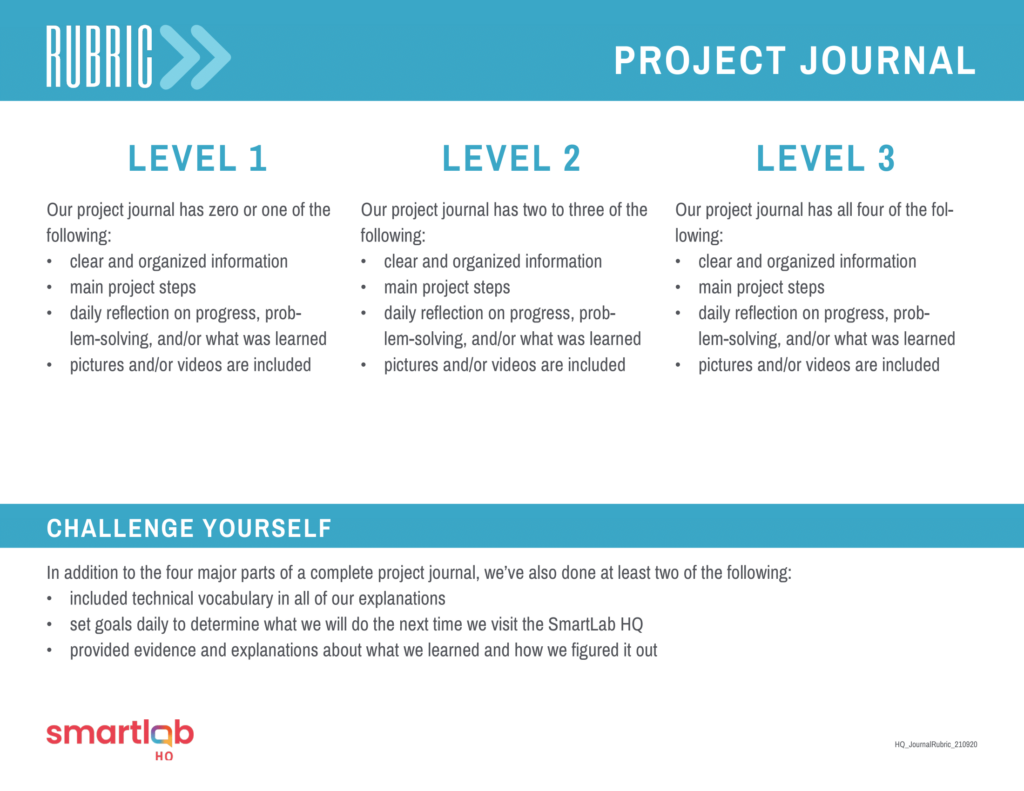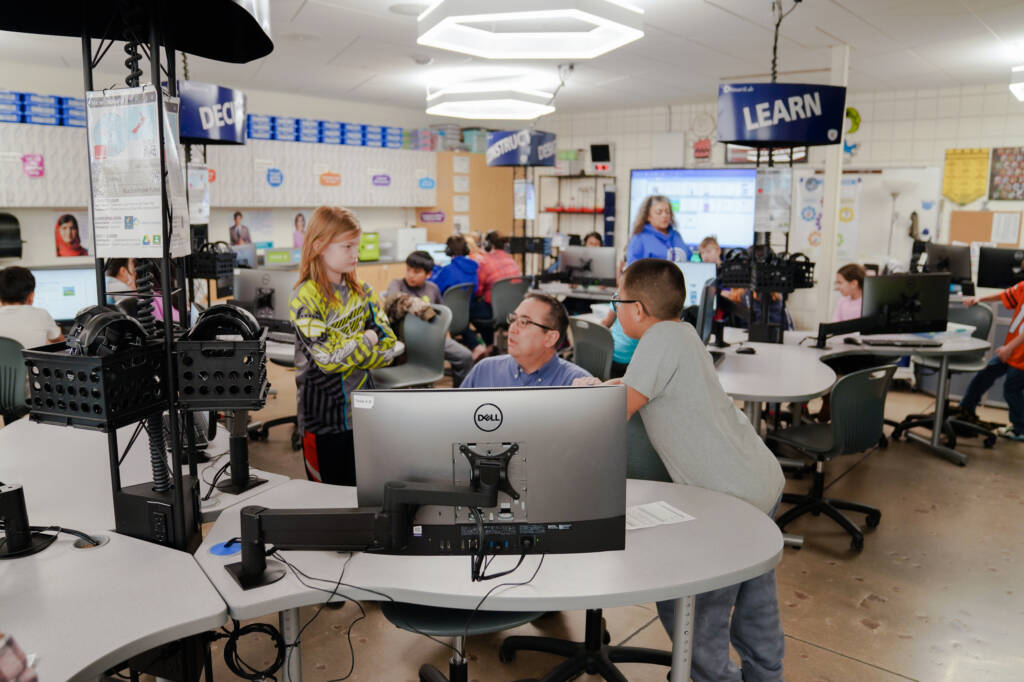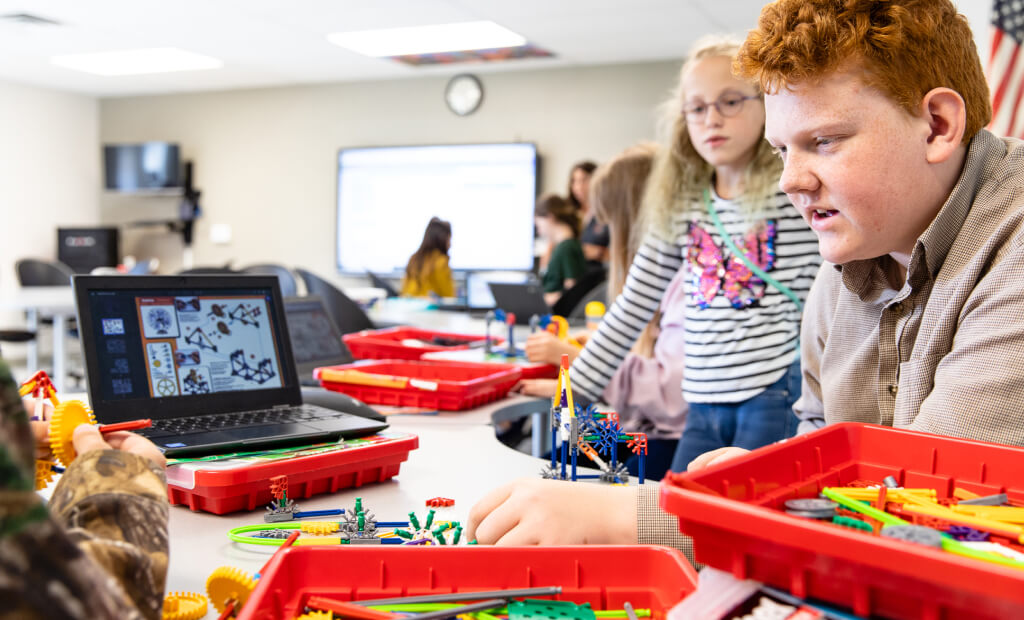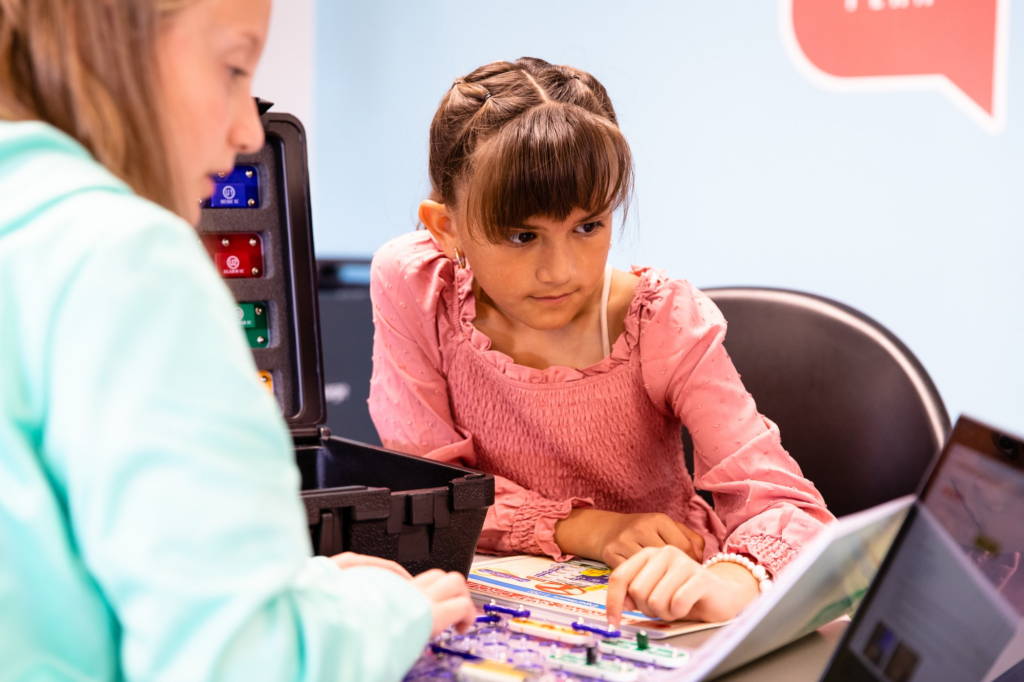How Do We Know What They Know? Empowering Learners with Documentation
In the SmartLab, the structures and routines are intentionally designed to support the transition from teacher-driven to student-driven learning. At first glance, this transition looks like student choice and the ability to set goals, but it also extends to monitoring and driving learning, i.e. formative assessment.
It is critical for facilitators to know how their students are progressing towards learning goals, but it is equally important that students have access to – and make use of – the same information (Black & Wiliam, 1998).
In this article, we will dig into three questions:
- How do we elicit information about what students know?
- How do we minimize barriers to ensure students are sharing their understanding to the fullest extent?
- How do we empower students to share the responsibility for formative assessment and intervention?
The Power of Effective Questioning: Eliciting What Students Know
One of the most frequently utilized facilitation strategies is questioning and prompting. Dylan Wiliam claims that there are two good reasons for asking students questions: “(1) to cause thinking and (2) to provide information for the teacher about what to do next,” (Wiliam, 2018).
Today we will focus on the latter reason, to gather information about what students know. This information is critical to helping students meet their learning goals.
Try these strategies for asking questions to uncover your students’ understanding:
- Ask Open-Ended Questions
- Encourage critical thinking and deeper understanding by posing open-ended questions that require more than a simple “yes” or “no” answer. For example, instead of asking, “Is your bridge strong enough?” you can ask, “How do you know your bridge is strong enough?”
- Consider the Depth of Knowledge
- Depth of Knowledge (DOK) refers to the extent of understanding and application students must demonstrate in formative or summative assessments (Francis, 2017). When you ask your students questions to determine their understanding, as you ask students’ questions, consider, “What depth of understanding does my question prompt my students to demonstrate?” Read more about DOK on ASCD’s blog.

Figure 1: Webb’s Depth of Knowledge (Synergis Education, 2018)
- Ask Follow-Up Questions
- Use a series of probing questions to determine the depth of your students’ understanding. Notice the progression in this series of questions: What is a series circuit? How is it different from a parallel circuit? When would you want to use a series instead of a parallel circuit? Which type of circuit would work best for your project? How will you know?
Pro Facilitator Tip: Utilize the learning outcomes in each project starter to generate questions. For example:
- Learning Outcome: I can use scale and proportion to build a tiny house.
- Questions: What do you know about scale and proportion? What is the scale factor for your kit? How do you know you’ve calculated the scale factor correctly? How will you use it when designing your tiny house? How would you determine the dimensions of your full-scale tiny house?
Use the SmartLab HQ Scope and Sequences to view the learning outcomes for all grade-band project starters.
Minimizing Barriers with Scaffolds for Student Responses
Even after asking great questions, you may wonder, “How do I know that my students have the tools to share their thinking completely?” Once you have posed your questions, it’s essential to provide scaffolds to help students communicate their knowledge more clearly.
Utilize these scaffolds to support all students in the expression of their thinking and understanding:
- Offer Options for Reflection
- Allow students to reflect on and document their thinking using a variety of methods. In LearningHub, students can submit reflections using any combination of text, audio, video, and file formats.
- Enhance Vocabulary Usage
- In the SmartLab, there’s a high degree of technical vocabulary that can support students in clearly explaining both their thinking and their observations. You can enhance your students’ incorporation of new vocabulary by directing them to the key vocabulary in each project starter, providing vocabulary banks, and supplying the technical vocabulary for what they describe in their reflections.
- Utilize Sentence Frames
- Introduce sentence frames to provide structure to student thinking. Practice using a variety of sentence frames in classroom discussions, in reflections, and in one-on-one conversations. For additional scaffolding, match the questions you ask with sentence frames that provide the correct structure for a student’s response. To get started, check out the sentence frames we already have in the SmartLab Facilitator Resources.
Empowering Students Through Metacognition
It’s not enough for facilitators to know where students are in the learning process. In research about the impact of formative assessment on student achievement, Royce Sadler notes the requirement of three conditions: students must (1) understand the learning goals to a similar degree as the teacher, (2) be able to monitor their progress throughout the learning process, and (3) have strategies to implement in order to reach the goal (Sadler, 1989).
In LearningHub, students develop an understanding of the learning goals through the I CAN statements in each project starter. And even when students further personalize their project with a SMART goal, it is shared with the facilitator, creating that common understanding.
Once learning goals are established, students must be able to monitor their progress throughout the learning process. This requires reflection and metacognition among students. Metacognition is the awareness and understanding of one’s own thought processes, which can enhance the ability to communicate knowledge effectively.
Though not the focus for today, students then utilize a variety of resources and strategies to reach their goal:
- Follow the SmartLab Learning Process
- Read the What You Should Know and Information About… sections of the project starter
- Instruction booklets, manuals, tutorials
- Develop a hypothesis and test it
- Learning from peers, i.e. Three Before Me
Sadler’s second condition, the ability to monitor progress, is required throughout the entire learning process. Utilize these strategies to enhance metacognition and students’ self-monitoring skills:
- Prompt Frequent Reflection
- The reflection questions in the embedded project starter assignments provide daily opportunities for students to reflect on and document their thinking. Encourage students to choose 2-3 questions to respond to, which can lead to more thoughtful responses (Wiliam, 2018).
- Use Rubrics for Self-Assessment

- Rubrics are the best tool to engage students in clear and objective self-assessment. Get started with SmartLab’s Self-Assessment Rubrics for Assessing Essential Life and Leadership Skills. Want to make your own? Find templates there to make your own!
- End with Goal Setting
- Information gathered during the learning process is only impactful if we do something with it. Engage students in daily goal setting to determine their next steps and how they will get there. When students don’t know the “how,” take advantage of this opportunity to introduce a new resource, teach a strategy, or use additional questioning to prompt investigation and discovery.
Knowing what students know is critical for students themselves and the educators who support their learning. Through the use of questioning, scaffolds, and metacognition strategies, your students can take ownership and make strides in their learning.
References
Black, P., & Wiliam, D. (1998). Assessment and classroom learning. Assessment in Education (5)1, 7-74.
Francis, E. (2017, May 9). What is Depth of Knowledge? ASCD. Retrieved October 24, 2023 from https://www.ascd.org/blogs/what-exactly-is-depth-of-knowledge-hint-its-not-a-wheel.
Sadler, D.R . (1989). Formative assessment and the design of instructional systems. Instructional Science, 18, 119-144.
Synergis Education (n.d.). Webb’s Depth of Knowledge [Infographic]. Retrieved October 24, 2023 from https://www.synergiseducation.com/blooms-taxonomy-and-webbs-depth-of-knowledge/
Wiliam, D. (2018). Embedded Formative Assessment. Solution Tree.





